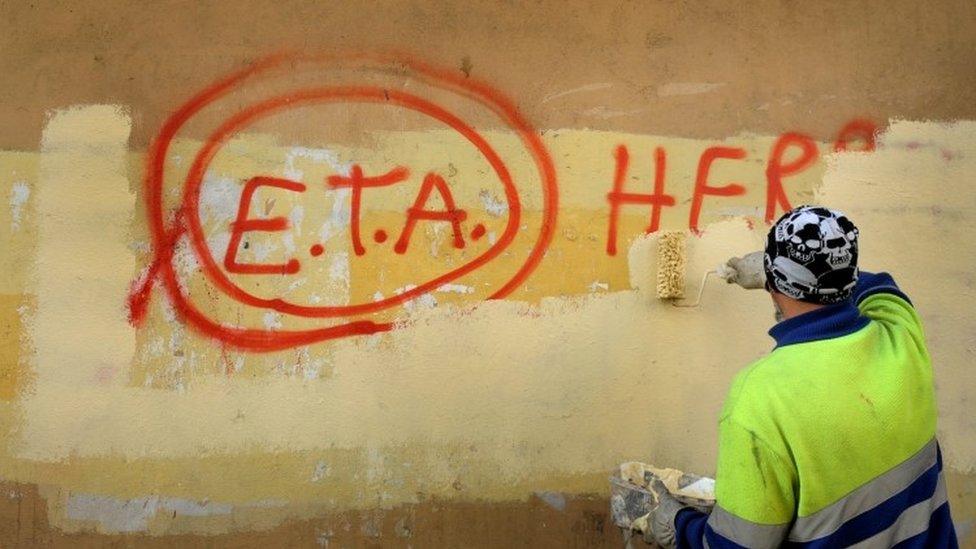Eta's violent campaign ends with hardly a whisper
- Published
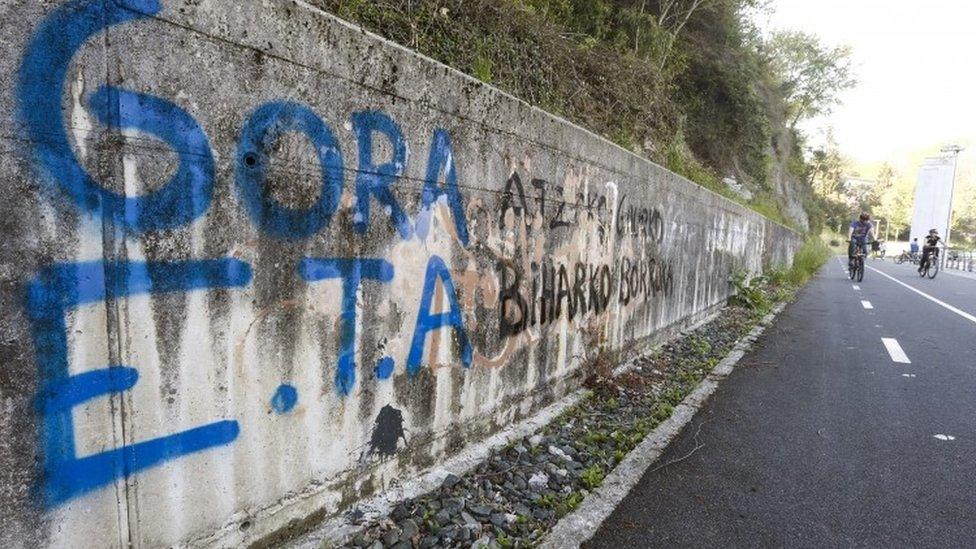
Eta still exists even though it has now closed an important chapter of its history
In the final days before the Basque separatist group Eta gave up its guns, mediators spoke of "jitters" over whether this long-awaited moment would go according to plan.
And as we drove into San Sebastian, in the heart of Spain's Basque region, we were halted by road blocks and stern faced police in black uniforms, guns pressed against their chests.
For a moment it felt like days of old when this picturesque town was an epicentre of Eta's bloody campaign for independence.
But then cyclists sped past, in a blaze of bright colours, in the warm spring sunshine.
It was the Tour of the Basque Country.
Last insurgency
The traffic jam also held up one of the mediators' Eta contacts for more than a hour. Decades ago, when Spanish and French security forces were locked in a brutal confrontation with Eta fighters, his delay would have been a cause for concern.
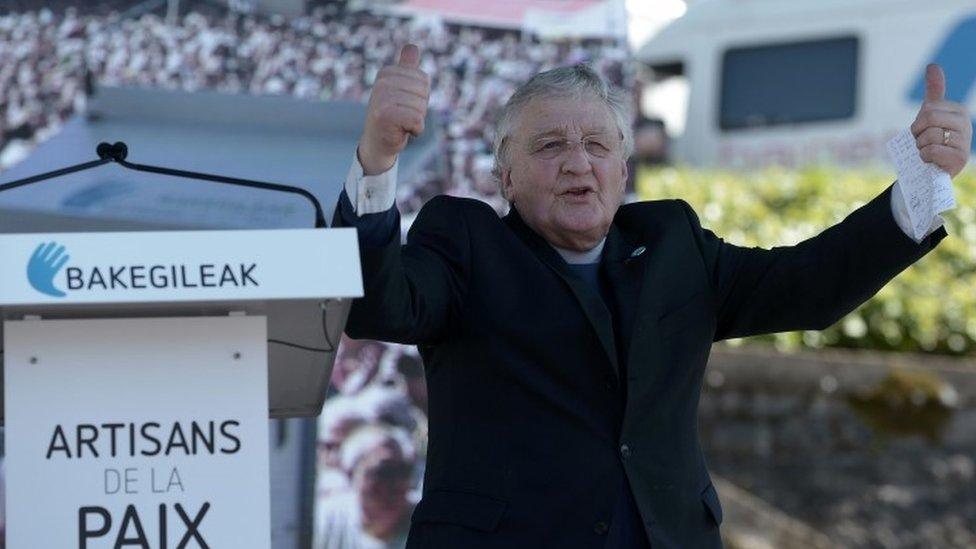
Irish Methodist preacher Harold Good has played a key role in the peace process
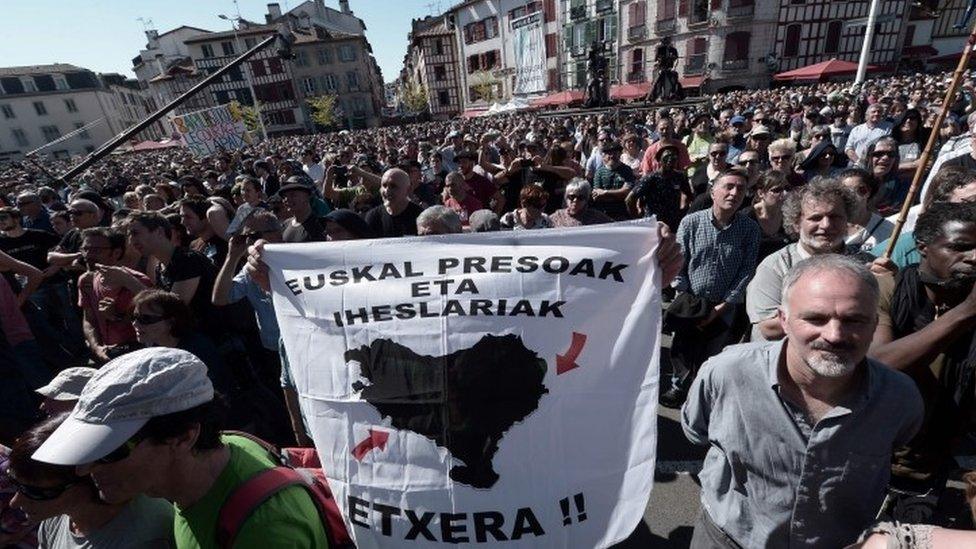
Pressure from within Basque society had been instrumental in sketching a new future for a region where there's still a strong yearning for independence
But on Saturday morning, just after sunrise, a dark chapter came to an end in a short simple ceremony in Bayonne City Hall in south-west France.
As the world confronts a new wave of extreme Islamist violence, the last insurgency in the heart of Europe has effectively ended. Eta's move was largely symbolic since much of its arsenal is obsolete. But symbolism matters in a conflict which has left a deep wound, particularly in Spanish society.
I and two other journalists were allowed to sit in on the ceremony.
In a statement handed to me through an intermediary two days before, the "Basque Socialist Revolutionary Organisation for National Liberation" announced their "Disarmament Day".
Like so much about this moment, it was a study in contrasts.
Shafts of sunlight streamed through the heavy drapes drawn across long windows in an elegant high ceilinged room.
History was made around a small square table which brought together international mediators who had worked toward this day for many years, along with members of an association called "Artisans of Peace".
Ram Manikkalingam played a key role in mediating the ceasefire

"Very significant" quantities of explosive materials have been handed over by Eta to the authorities
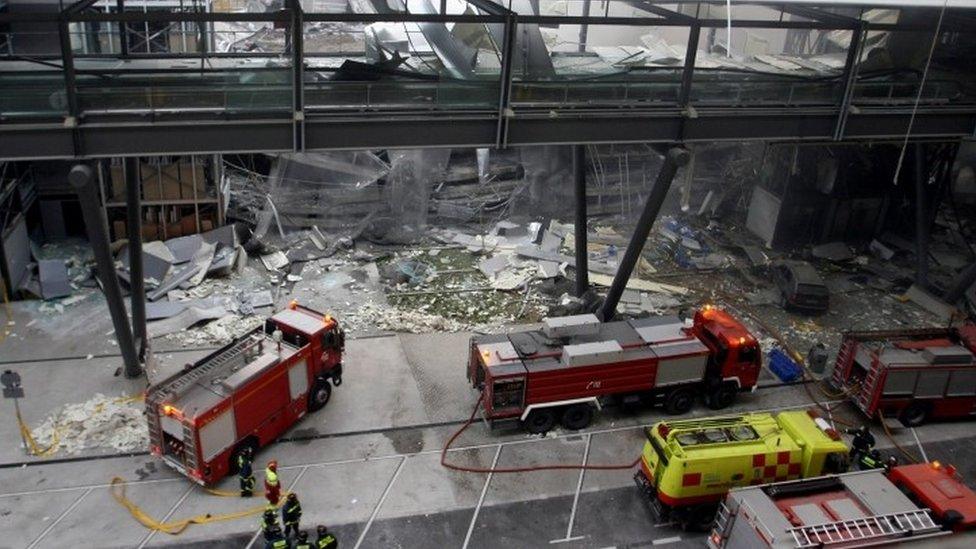
Anger and antagonism over a half a century of Eta car bombings and assassinations haven't gone away
Pressure from within Basque society had been instrumental in sketching a new future for a region where there is still a strong yearning for independence.
But anger and antagonism over a half a century of Eta car bombings and assassinations haven't gone away either. The Spanish and French governments still refuse to negotiate with a proscribed terrorist group.
Eta tried for years to open a secret channel. Sources say that in the past year there were high-level contacts with senior French officials. Spain blocked them on at least three occasions.
So unlike in Northern Ireland and Colombia, where governments played a role, Eta's disarmament came about through a unique collaboration between international organisations and an array of civil society actors ranging from churches to trade unions.
Eta had warned in their statement, with palpable bitterness, that "enemies of peace" could attack their event.
But, on the day, Spanish authorities "looked the other way", and the French "actively looked the other way", in the words of one of the international organisers. French forces discreetly secured Bayonne City Hall on a quiet Saturday morning.
It fell to French Basque environmentalist, Txetx Etcheverry, dressed in casual attire, to hand over a black dossier bulging with blue files.
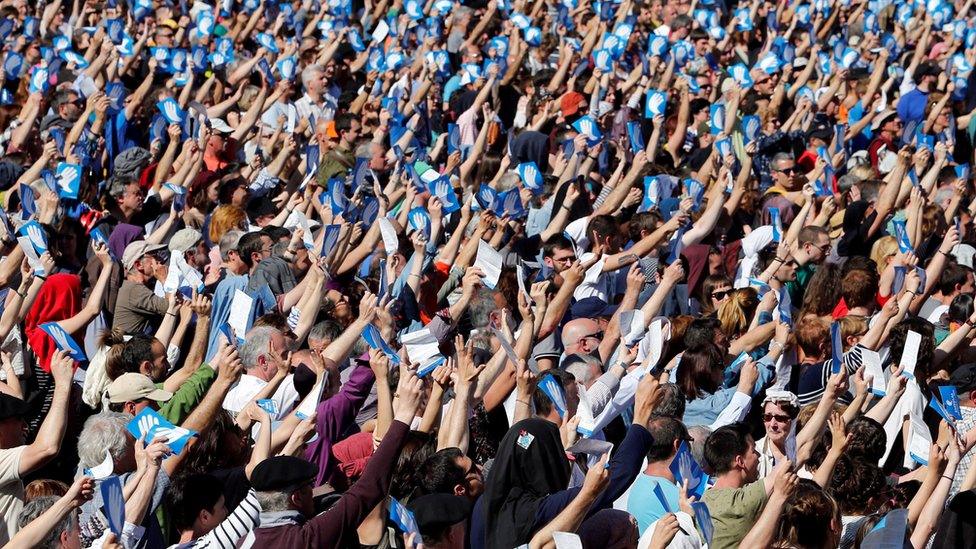
Eta's announcement was followed by a mass demonstration in favour of peace
This was Eta's inventory with details of their remaining weaponry including locations of their last arms dumps which are all in France.
The file then rested for a moment in the hands of two leading men of the cloth: Archbishop Matteo Zuppi of Bologna and The Reverend Harold Good from Northern Ireland who had also witnessed the IRA's weapons decommissioning more than a decade ago.
From where I sat, I could see there was text and photographs about what was later described as "very significant" quantities of explosive materials - nearly three tons worth - and about 120 guns.
The white bearded Reverend Good, who's been visiting this region since 2005, later told me it was a "wonderful day".
And then, the documents were passed to Ram Manikkalingam, a mediator who decided the occasion merited a suit and tie, who heads the Amsterdam-based Dialogue Advisory Group.
"There were many moments when we doubted this would happen," he admitted when we sat down in the same room after he had deposited Eta's file in the French prosecutor's office in City hall.
Eta killed hundreds of people over 40 years
"There were steps forward, and steps backward," recalls Mr Manikkalingam who, as chair of the International Verification Commission, has also been monitoring Eta's unilateral ceasefire declared in 2011.
It has taken since then to convince Eta fighters to give up their weaponry without getting anything in return. Tracking down what's left also took time in a highly secretive organisation with a myriad of small cells.
And not everyone is on board. Sources estimate Eta dissidents include about 100 hardline fighters, including prisoners and their family members and gunmen still underground.
"This worried us constantly," admits Mr Manikkalingam. "As we know from the Northern Ireland experience, one of the worst bomb attacks took place after the Good Friday Agreement."
Sources say lessons were drawn from IRA history to try to ensure bomb makers are under control, and any signs of dissatisfaction are addressed.
And Eta still exists. Hence, the only reaction from Spain's Prime Minister Mariano Rajoy and his governing People's Party (PP) was to call on "terrorists" to "dissolve... and disappear" but not before apologising to its many victims.
"As a long-time observer - and I never thought I would say this - I have to say that the PP's hardline, 'no talks, this is a law-and-order matter' has worked," remarked journalist and historian Giles Tremlett who also sat in on the handover ceremony. "Eta has been defeated."
From Eta to Stockholm: Is terror more of a threat to Europe than before?
Eta disarms: French police find 3.5 tonnes of weapons
Rev Harold Good says Eta disarmament 'hugely important'
But the mood was still buoyant at a packed "Peace Rally" in the Old Town of Bayonne. A video on a big screen showed Eta's arms dumps being guarded by volunteers before French police arrived to carry away their contents.
"There are issues which need to be addressed on the road to peace," explained Gorku Elejabarrieta of the pro-independence Basque party Sortu, who was still beaming after attending a rally he said gathered people from all parts of society.
"Every victim has to be acknowledged, including more than 300 Eta prisoners," he said, "But we must work on this together."
The day before, I met his party leader, Arnaldo Otegi, who once headed Eta's political wing. It had earned him the nickname "Gerry Adams", in another nod to Northern Ireland.
"The armed conflict should have ended earlier," he conceded. "Our society wanted us to take this step earlier and we should have listened.
"Everyone needs to understand it is not easy to convince militants, after many years of armed struggle, to take this step," added the prominent politician who played a key role behind the scenes. "The past finished late but we want a different future."
As "Disarmament Day" drew to a close, a video of the handover ceremony was made available. But all the audio was removed. An armed group which first emerged with a very big bang closed this chapter without even a whisper.
- Published8 April 2017
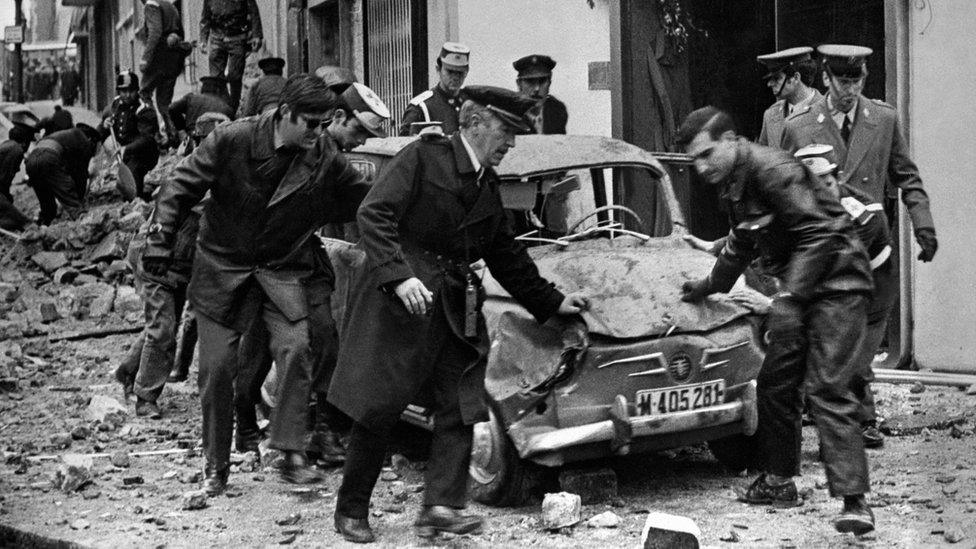
- Published8 April 2017
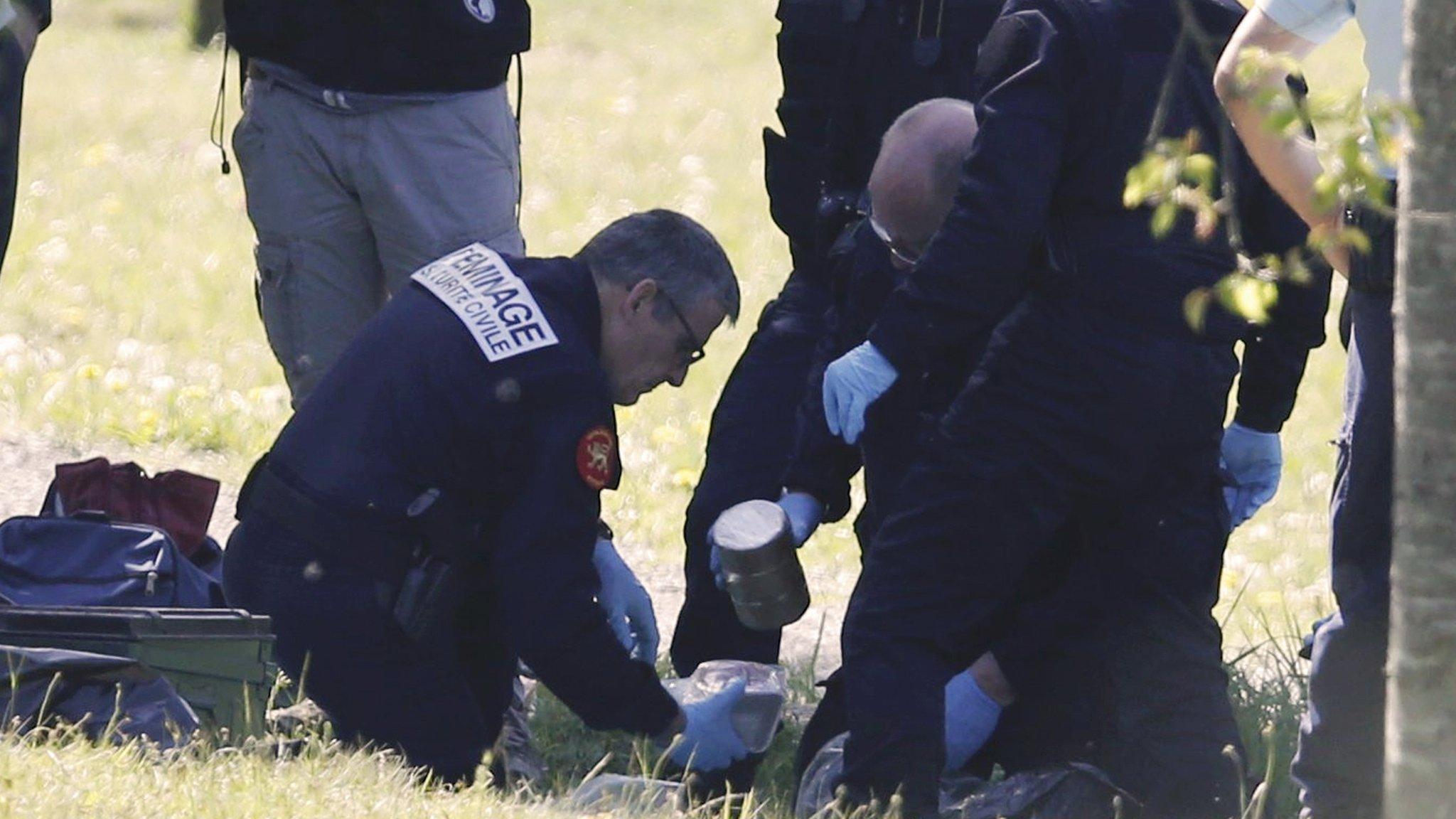
- Published8 April 2017
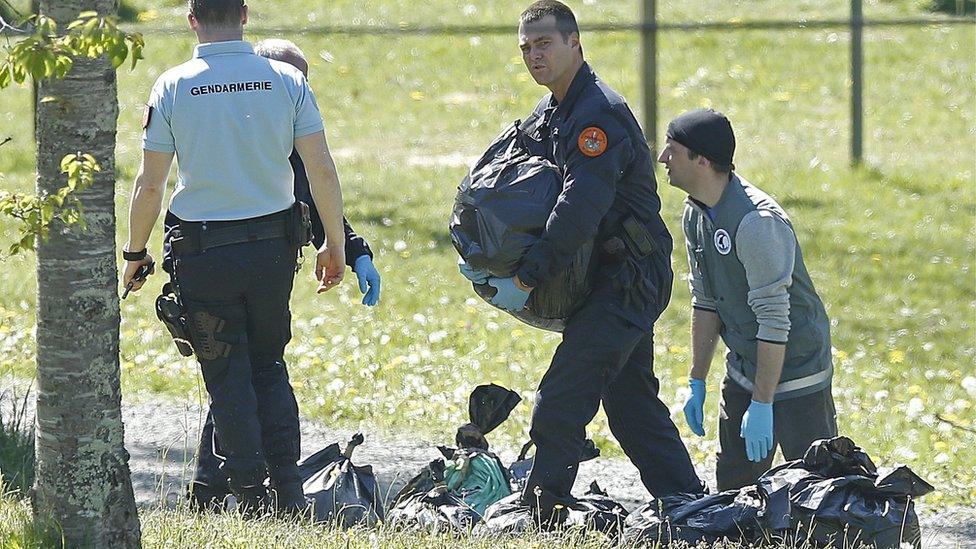
- Published16 May 2019
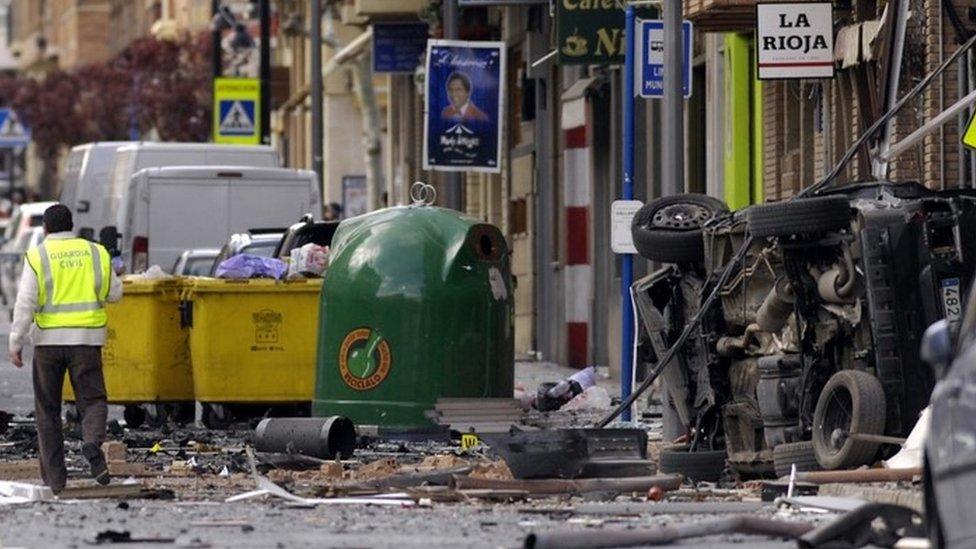
- Published8 April 2017
